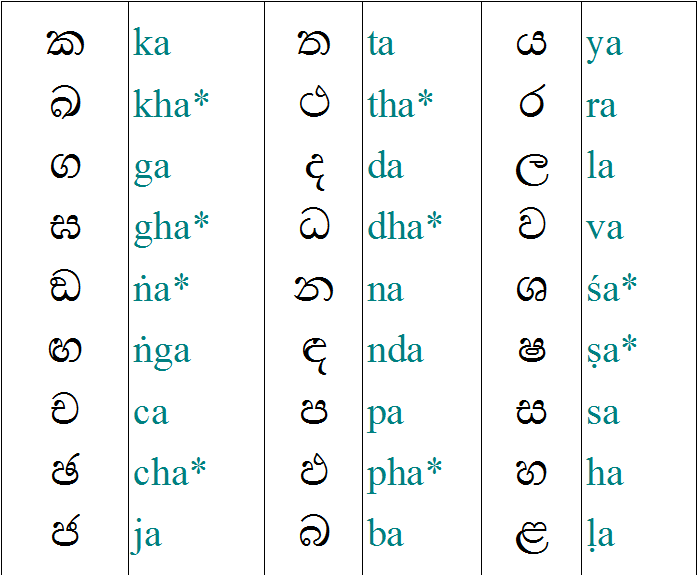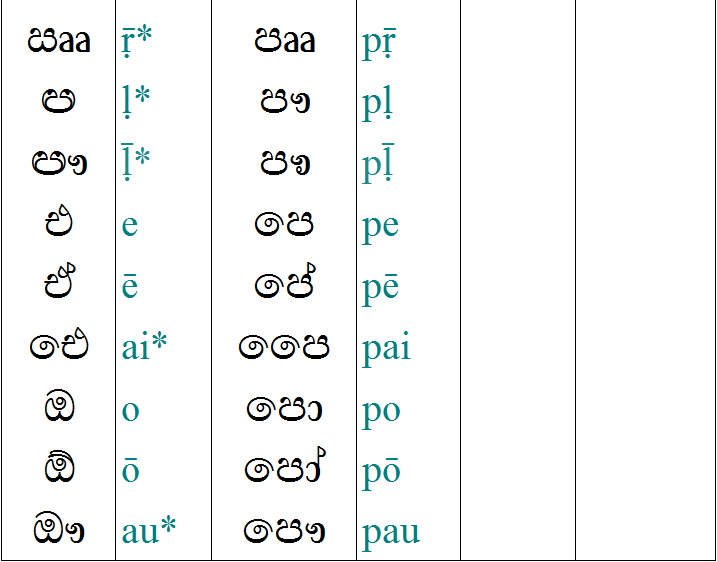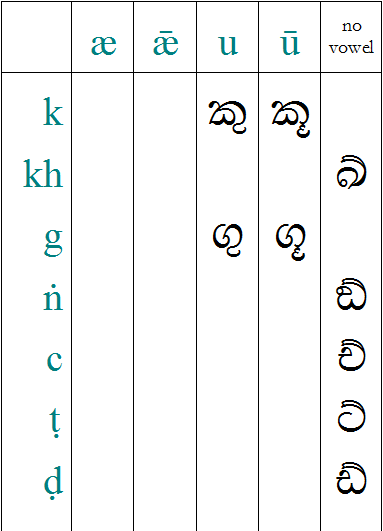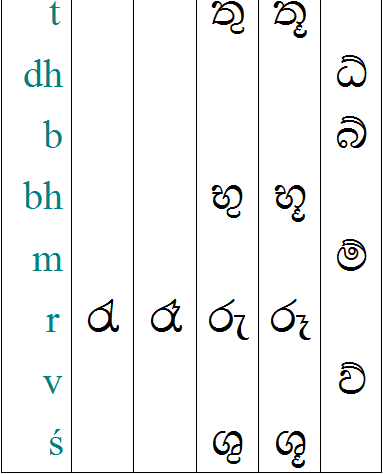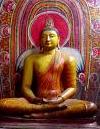This is the writing system for the Sinhalese language, spoken on the island of Sri Lanka. It is among the many scripts deriving ultimately from Brahmi, and is certainly one of the loveliest scripts in the world. These images were produced after finding so few large and clear examples of the rather complex (and fussy) letters.
Consonants
Consonants have an inherent /a/. Those with an asterisk * are not used in the pure Sinhalese language, but have been used in the writing of Pali and Sanskrit words. I have made the chart large to enable seeing the glyphs in detail.
Vowels and other marks
Initial (solo) vowels have an independent form. After a consonant, a vowel is written as a symbol after, above, below, before or surrounding the body of that consonant, and the vowel replaces the inherent short /a/. In the last column, a vowel-silencer is seen, along with two other effects common in Pali/Sanskrit. The full stop is an old-fashioned symbol.
Irregular vowel attachments
In some cases of vowel attachment, the shape of the consonant requires a different style from those depicted in the table above.
Kerned and ligature forms
Some common combinations of consecutive consonants are written joined; the first consonant is without a vowel but does not have a vowel-silencer mark.
Other close combinations use special diacritics or completely new forms. These are the ligatures involving medial /r/, /y/ and /v/.
Sample text
This is a Buddhist verse (actually Pali) from Vinaya Mahavagga I.23:

